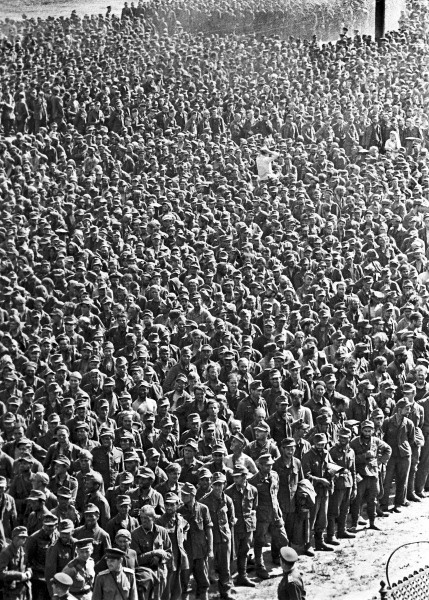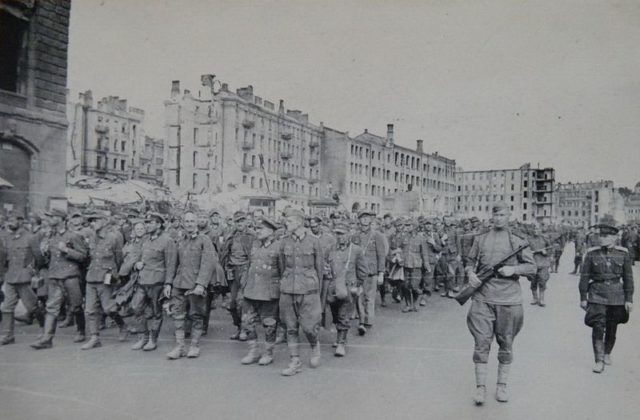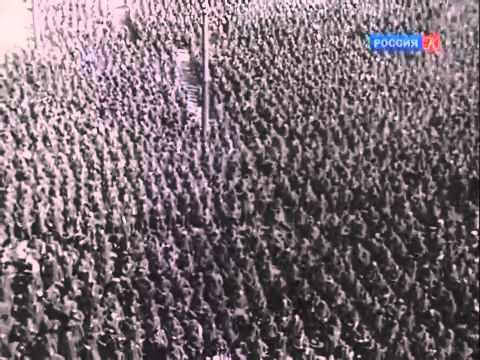During World War II, Russian forces captured approximately three million German soldiers. Most of the prisoners of war were arrested during the last year of the war as they were battling the great onslaughts of the Soviet armed troops. The POWs were utilized as forced labor during the country’s wartime economy and the nation’s rebuilding efforts after the war.
The Russian troops captured few Germans soldiers during the early months of the Soviet-German war. By early 1942, after the Battle of Moscow, the number of prisoners in the Russian POW camps rose to 120,000. When the retreat of the German 6th Army was cut off, and they surrendered, 91,000 of the survivors at the Battle of Stalingrad became POWs. The total number of POWs in early 1943 grew to 211,000.

During the blockade of Stalingrad, many of the German soldiers died of wounds, starvation, and lack of medical care. During the months that followed their capture at Stalingrad, weakened by disease (particularly typhus), malnutrition, and mistreatment, more POWs died. There were only approximately 6,000 that lived to be repatriated after the war. When the weak economic situation in Russia began to subside in 1943, the death rate in the prisoner of war camps reduced dramatically. Concurrently, the prisoners of war became a significant source of labor for the Russian economy severely deprived of a workforce. With the formation of the National Committee for a Free Germany and the League of German Officers, pro-communist prisoners of war had better privileges and more rations.
As a result of Operation Bagration by the Soviet Union and the disintegration of the southern part of the German Eastern Front, the number of German prisoners of war nearly doubled during the second half of 1944. At the start of 1945, the Soviet Army pressed forward to the Oder river and the Balkans. Once again the number of prisoners of war increased – to 2,000,000 in April 1945.
According to available Russian records, a total of 2.8 million German Wehrmacht personnel were held as prisoners of war by the Russians by the time World War II ended. By the end of 1946, a significant number of German POWs had been released; the Soviet Union prisoner of war number was less than Britain and France combined. With the creation of a pro-communist state in the Soviet occupation zone of Germany – the German Democratic Republic (East Germany) – in October 1949, all but 85,000 prisoners of war had been released from the Soviet camps and repatriated to Germany. Most of the remaining German prisoners had been convicted as war criminals; given long sentences – usually 25 years – and sent to forced labor camps. In 1956, following the intervention of West German Chancellor Konrad Adenauer in Moscow, the last of these war convicts (Kriegsverurteilte) were repatriated.
An estimate by one British historian is that 356,000 prisoners of war died in Soviet labor camps from a total of 2,880,000 captured German soldiers.
According to one source, in May 1945, as a “gesture of friendship,” the US chose to dispense several hundred thousand German prisoners to the Soviet Union. Professor of History at Harvard University Niall Ferguson maintains that “It is quite clear that many German military units sought to surrender to the Americans rather than surrendering to other Allied forces and particularly the Soviet Army.” Heinz Nawratil, a German lawyer, and author, claims that US forces refused to accept the surrender of German troops in the German state of Saxony and the Czech Republic region of Bohemia, and instead passed them on to the Soviet Union.

The New York Times reported that thousands of prisoners were relocated from prisoner of war camps in the West to authorities in the Soviet Union. One such known example is that 6,000 German officers were transferred to the Sachsenhausen concentration camp in Germany, which at the time was one of the Soviet secret police’s special camps. From there they were transferred to POW camps in the Soviet Union.
Documents of the Soviet Ministry for the Interior, which were released in 1990, recorded that 6,680 inmates in the Russian secret police special camps in Germany from 1945 to 1949 were transferred to the Soviet prisoner of war camps.
